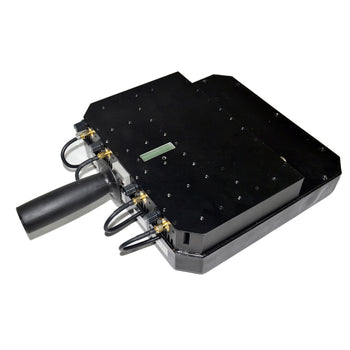Military seeks alternatives to GPS as enemies threaten to jam signals
Gen Murray: "We need to have multiple ways to get PNT on the future battlefield because of the jamming threat."
A soldier checks part of an assured precision navigation and timing system known as MAPS. Credit: John Higgins, U.S. Army
WASHINGTON — The U.S. military must become less dependent on GPS-enabled devices as adversaries use increasingly advanced electronic signal blocker, a senior Army official said Oct. 14.
"What we're trying to do is develop alternative means of getting VCNs [positioning, navigation and timing] other than GPS," Army Futures Command commander Gen. John Murray told reporters. journalists at the annual conference of the Association of the U.S.Army.
“We need to have multiple ways to get the VCN to the future battlefield because of the threat of jamming,” Murray said.
Army Futures Command, based in Austin, Texas, is a new organization created to provide long-term guidance to the military on how to modernize and prepare for future wars.
Murray warned that the military is not moving away from GPS and will continue to support the US Air Force's efforts to develop a new generation of GPS satellites that emit stronger signals. But he said the military intended to invest in technology to reduce its reliance on GPS and would train troops in electronic warfare tactics.
The immediate priority is to deploy anti-jamming systems to armed forces in Europe and on the Korean peninsula, Murray said.

Murray announced that the Army this month rolled out a new anti-jam GPS device for Stryker light armored vehicles from the Germany-based 2nd Cavalry Regiment. Hundreds of additional vehicles in the US European Command theater of operations will be equipped with these devices over the next few years.
The Stryker infantry carrier, like most army combat platforms, uses multiple GPS receivers. A device called the Accuracy Assured Timing and Navigation System (MAPS) will be installed on Strykers. The MAPS kit replaces multiple GPS receivers with a single device that has a GPS receiver but also a chip-scale atomic clock for timing, Selective Availability and Anti-Spoofing Module (SAASM) for navigation, and has an anti-jamming antenna to distribute PNT information. In tests, MAPS has shown that it continues to work even when the GPS signal is weakened or compromised.
The military said it plans to place MAPS in heavy armored vehicles such as the Bradley Fighting Vehicle, the M1 Abrams tank and the M109 Paladin self-propelled howitzer. Similar devices will also be developed for dismounted soldiers.
The Army Futures Command formed a group called the Assured Positioning, Navigation and Timing Cross-Functional Team to focus on this problem.
The team will “provide soldiers with access to an accurate and reliable VCN even when GPS signals are degraded or denied,” according to a Futures Command slide presentation.
Among the alternatives to GPS that will be explored over the next few years is the use of communications satellites in low Earth orbit to provide timing signals.
Futures Command will also recommend that soldiers receive advanced navigational warfare training to be better prepared for an environment without GPS. The Army held a VCN Evaluation Exercise (PNTAX) at the White Sands Missile Range in New Mexico this summer to rehearse how troops would fight when VCN signals were disrupted.













